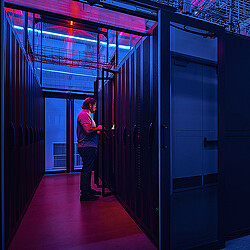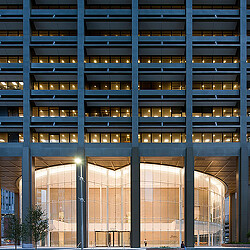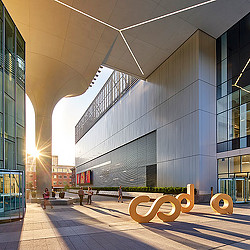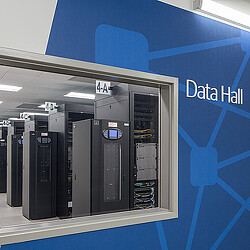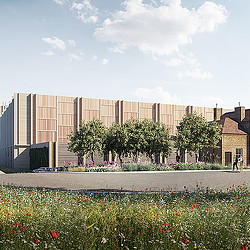Fusion Center Models: The Future of 24/7 Banking Support Hubs
In an increasingly digital world, banks are turning to Fusion Centers to protect and respond to cybersecurity threats, financial fraud, and other concerns.
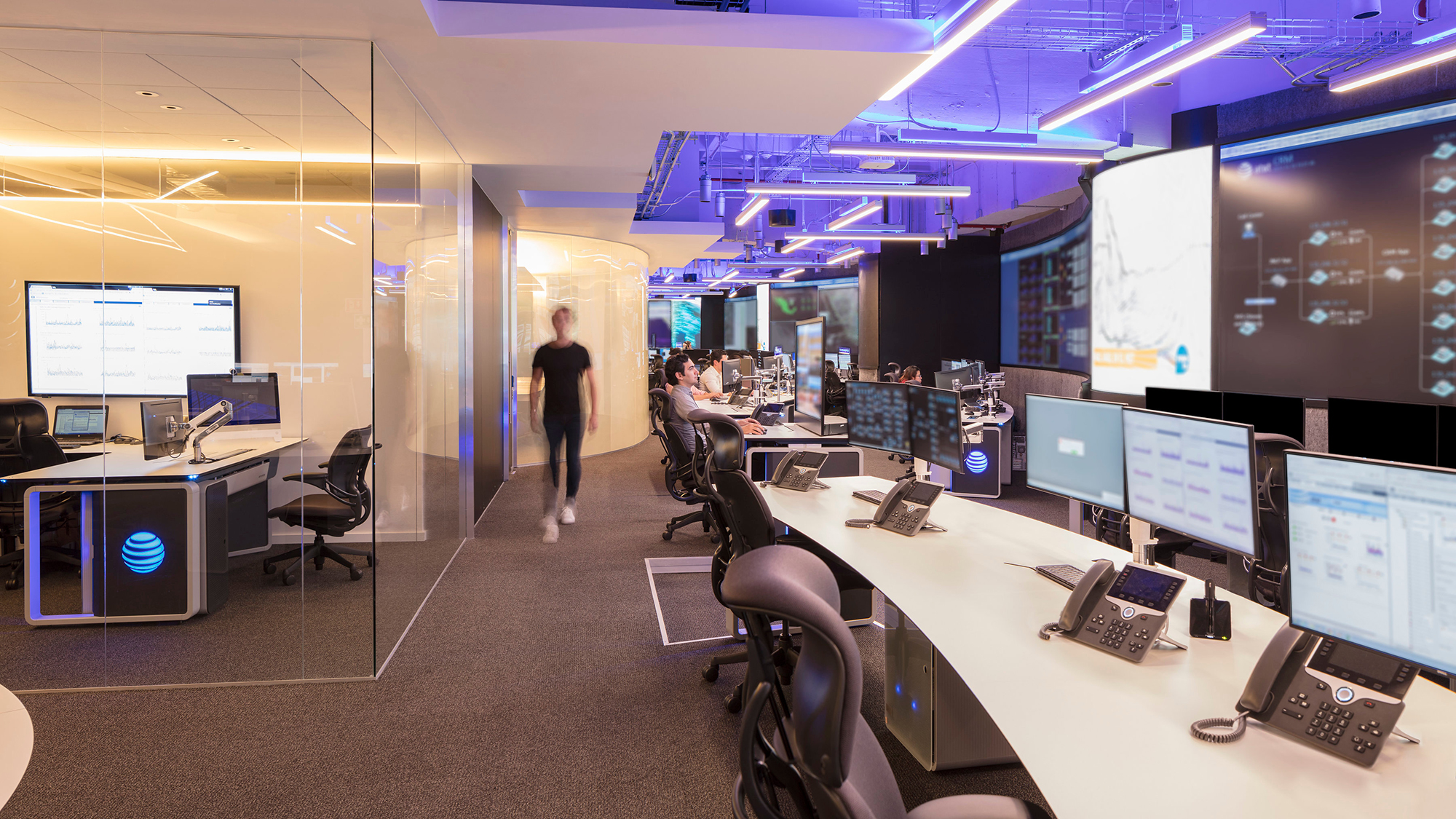
As technologies like generative AI rapidly advance, compute-heavy banking applications such as virtual bank tellers may begin to take on serious tasks like financial transactions, customer support, and training. When this virtual world becomes such a large part of your business, having a physical space to protect it is paramount.
In an increasingly digital world, banks are turning to a model that is rapidly gaining traction to monitor, protect, and respond to cybersecurity threats, financial fraud, and other concerns in real-time: the Fusion Center.
Gensler has been designing Fusion Centers for our banking and government clients to consolidate critical operations in a shared suite, improving collaboration between groups critical to business operations. Collocating mission-critical functions also allows efficient and reliable MEP infrastructure to be supplied to a single secure location.
In other Fusion Centers, there are five typical departments:
- Physical Security
- Cybersecurity
- Emergency Operations
- Building Operations
- (IT) Network Operations
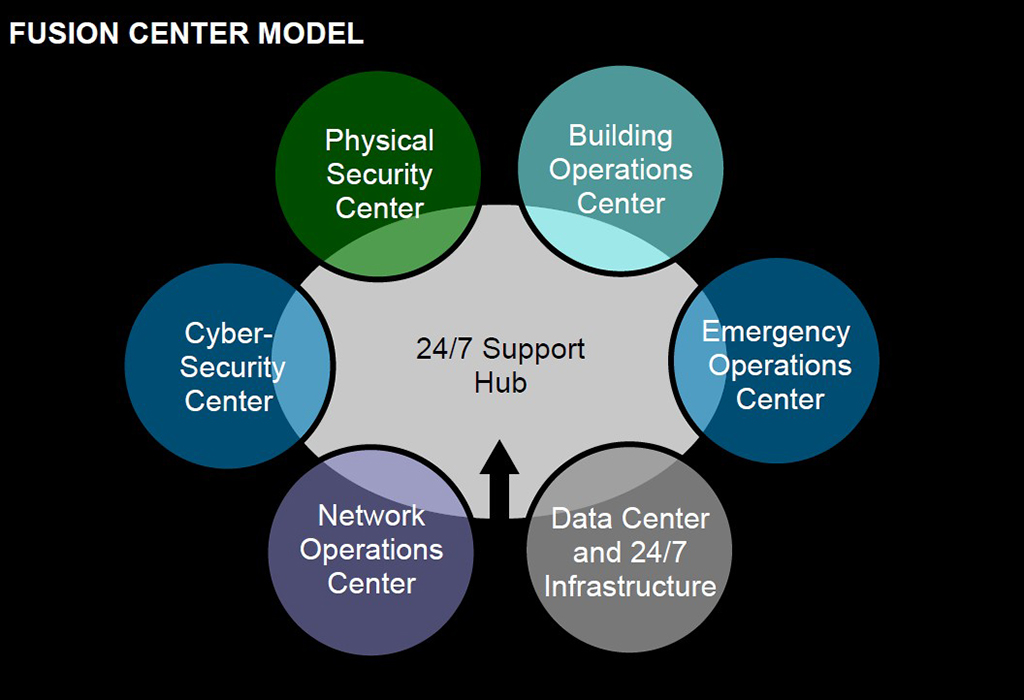
Threats and risks to an organization’s safety and operations today are often multidimensional and interrelated. A common cyber intrusion strategy is to attack lower-level systems, like a building management system, to gain a foothold in the system. Cyber intrusion can also be a precursor to a physical security breach.
The opposite is also true: a physical security breach can lead to a cybersecurity breach. Having a single space where these teams can safely and securely collaborate and communicate is key. Once an event has occurred, having a safe space to manage that emergency is a critical part of the Fusion Center. These emergencies can be man-made or natural, like floods and storms.
Physical Security Operations Center (PSOC)
The PSOC is a secure room to monitor and react to physical security problems at the headquarters, as well as system wide. A video wall for security camera feeds typically dominates this space. It also monitors other intrusion detection equipment. Common support spaces include:
- Video editing studio for evidence documentation
- Technical lab with examples of all the security equipment deployed
- Small “war room” conference space with visibility into the control center
Cyber Security Center (CSC)
The CSC is designed to monitor threats to the bank’s network systems. This space works closely with the Physical Security Operations Center and Network Operations Center. Physical and visual adjacency is desired. Like the Physical Security Operations Center, the main space is dominated by a series of displays or a large video wall for cyber monitoring dashboards. On occasion, the cybersecurity team will need to investigate bank personnel. To perform this service, three support spaces are needed:
- Evidence vault
- Technical lab for working on hardware
- Secure workroom for confidential internal investigations
Emergency Operations Center (EOC)
The EOC or Disaster Recovery Center is a secure location with robust infrastructure where corporate leadership and crisis response teams can gather and be briefed. This space is a highly connected, large conference room with a supporting AV system, allowing real-time intelligence to be pulled from various Fusion Center departments.
Network Operations Center (NOC)
The NOC is similar to the Cyber Operation Center, with large, highly equipped displays. The work in this space focuses on monitoring the network, troubleshooting, and maintenance. Some clients invite trusted third parties into this space as team members to collaborate in person. With cloud-based services scattered in data centers globally, having a physical space with real people to respond to problems has become increasingly important.
Data Center and 24/7 Infrastructure
All the spaces in a Fusion Center require consistent access to data, while displays require racks of AV equipment. It makes sense to create a robust data center in or near the Fusion Center. The redundant mechanical and electrical infrastructure required for the data center can be upsized to provide the same level of reliability to the various operation centers. When you distribute spaces like these through a headquarters project, it becomes difficult to maintain and manage as a facility.
These centers can also become potential profit centers. For example, Gensler designed a Fusion Center concept for the Washington, D.C. Metro transportation system, which comprised two floors of a larger mixed-use headquarters tower. They built a second segregated data center to house trusted partners who wanted access to their underground tunnels used to route fiber throughout the city. This may be an option for the bank to invite trusted partners to share this reliable and secure data center.
Building Operations Center (BOC)
A Building Operations Center (BOC) monitors the health of systems and manages their maintenance cycles. Today’s buildings are highly integrated systems with advanced monitoring and control systems, so adding a BOC to a Fusion Center Concept can bolster reliability.
Shared 24/7 Support Hub
The 24/7 staff are highly skilled workers who spend long hours, nights, and holidays in the Fusion Center, so attraction and retention are essential. The Support Hub, a lounge breakroom shared between the various Fusion Center departments, acts as a living room with team conference rooms; touchdown workstations for visitors and additional staff during a crisis; wellness, prayer, and meditation spaces; a kitchen, coffee area, and breakroom; bathrooms with showers; personal items lockers; and storage and loading access to support the data center. This space should be conveniently located near the Operation Centers so that operators can quickly return to their stations.
We believe that large banking systems should consider collocating these functions in a single suite on a dedicated floor or group of floors with a high level of security. This suite can then be protected and supported with resilient and reliable infrastructure.
By integrating data and expertise from various departments, a Fusion Center can help improve threat detection, speed response times, and enhance resilience against cybercrime and financial fraud. When purposefully designed, the Fusion Center can become the most important space in the organization.
For media inquiries, email .

